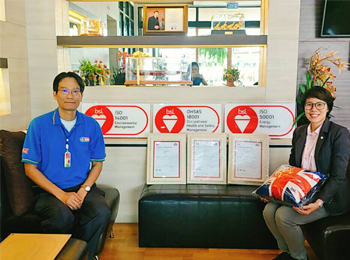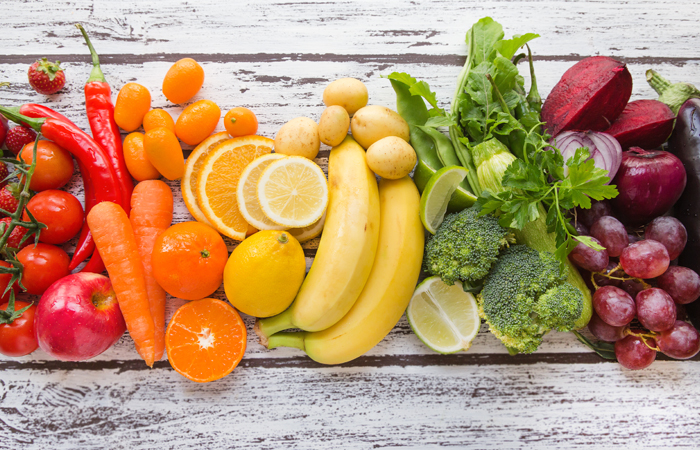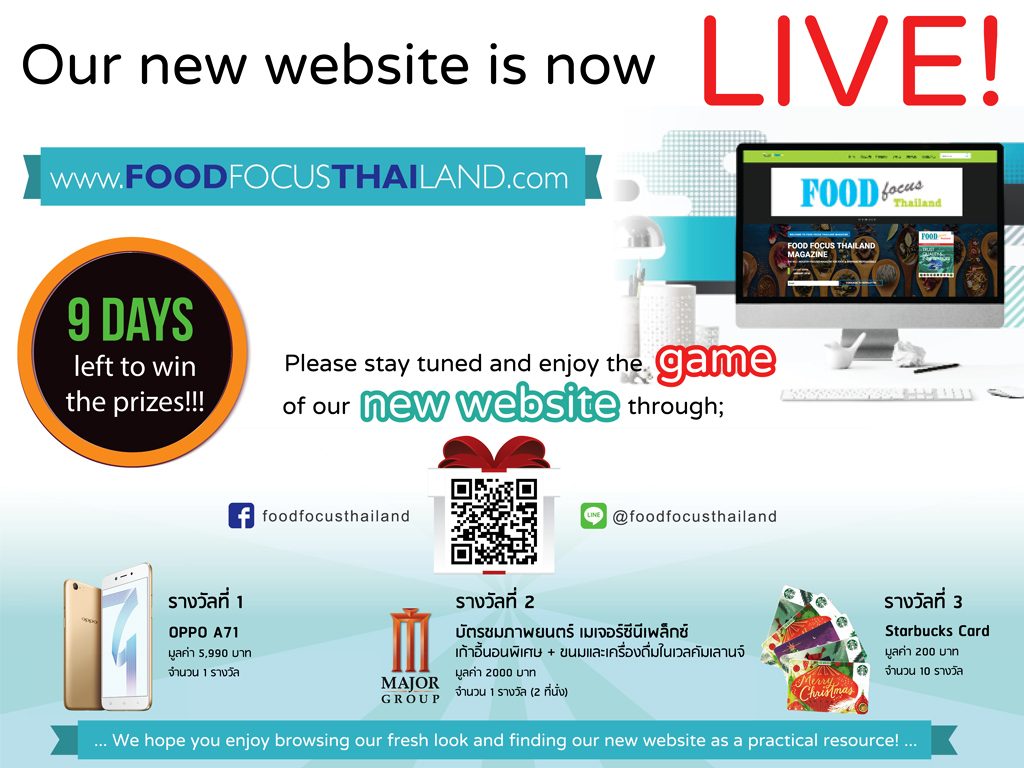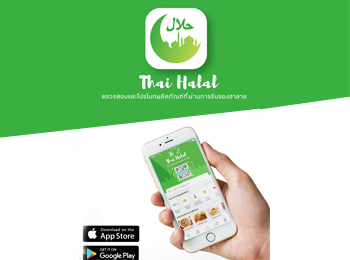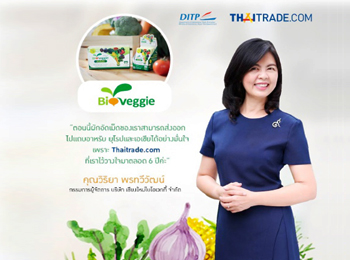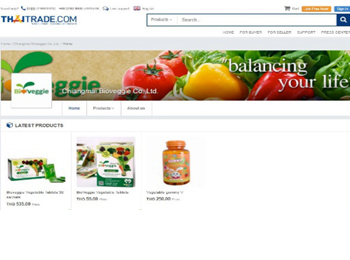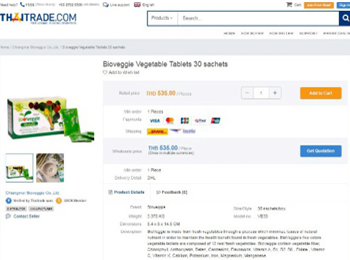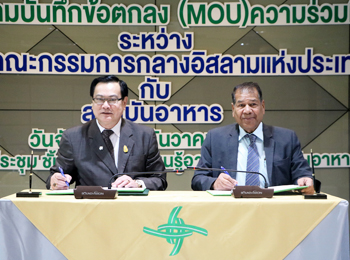สถานการณ์ธุรกิจเกษตรและอาหารในปัจจุบันและแนวโน้มในอนาคต
By: สถาบันอาหาร กระทรวงอุตสาหกรรม
National Food Institute, Ministry of Industry
มีรายงานฉบับล่าสุด Food Industry Outlook 2018 จากการแถลงข่าวร่วม 3 องค์กรเศรษฐกิจด้านธุรกิจเกษตรและอาหาร โดยสภาหอการค้าแห่งประเทศไทย สภาอุตสาหกรรมแห่งประเทศไทย และสถาบันอาหาร ได้เปิดเผยข้อมูลภาพรวมอุตสาหกรรมอาหารของไทยปี 2560 และแนวโน้มปี 2561
สถานการณ์ธุรกิจเกษตรและอาหาร ปี 2560
ภาคการผลิตอุตสาหกรรมอาหารไทยในปี 2560 ขยายตัวเพิ่มขึ้นร้อยละ 3.0 สำหรับการส่งออกคาดว่าจะมีปริมาณ 32.5 ล้านตัน มีมูลค่า 1 ล้านล้านบาท ขยายตัวเพิ่มขึ้นในอัตราร้อยละ 4.5 และร้อยละ 5.3 ตามลำดับ ลดลงเล็กน้อยจากตัวเลขประมาณการครั้งก่อนที่คาดว่าจะส่งออกได้ 33.0 ล้านตัน มูลค่า 1.03 ล้านบาท เนื่องจากการส่งออกสินค้าหลักหลายรายการลดลงกว่าที่คาด
กลุ่มประเทศ CLMV ยังคงเป็นตลาดส่งออกอาหารอันดับ 1 ของไทย มีสัดส่วนร้อยละ 16.6 รองลงมา ได้แก่ ญี่ปุ่นร้อยละ 13.5 อาเซียนเดิมร้อยละ 11.6 สหรัฐอเมริการ้อยละ 10.6 แอฟริการ้อยละ 9.3 จีนร้อยละ 9.0 สหภาพยุโรปร้อยละ 6.0 ตะวันออกกลางร้อยละ 4.2 โอเชียเนียร้อยละ 3.3 สหราชอาณาจักรร้อยละ 3.0 และเอเชียใต้ร้อยละ 1.6 โดยตลาดส่งออกหลักของไทยส่วนใหญ่มีอัตราการขยายตัวเพิ่มขึ้นเมื่อเทียบจากปีก่อนหน้า ยกเว้นตลาดอาเซียนเดิม (ASEAN-5) ลดลงร้อยละ 10.7 ตามปริมาณการส่งออกสินค้าหลัก อาทิ น้ำตาลทราย และแป้งมันสำปะหลังที่ลดลง สหรัฐอเมริกาลดลงร้อยละ 2.3 จากการส่งออกสับปะรดกระป๋องและปลาทะเลแช่แข็งที่หดตัวลง และสหราชอาณาจักรลดลงร้อยละ 10.9 จากการเผชิญภาวการณ์ชะลอตัวทางเศรษฐกิจและการแข็งค่าของค่าเงินปอนด์เทียบบาท
กลุ่มสินค้าดาวเด่นของไทยในอนาคต
คุณยงวุฒิ เสาวพฤกษ์ ผู้อำนวยการสถาบันอาหาร แสดงความคิดเห็นเพิ่มเติมว่า “แม้ว่าสินค้าส่งออกหลักหลายรายการจะชะลอตัวลง แต่ก็มีสินค้าส่งออกกลุ่มใหม่ๆ ที่ขยายตัวสูงและคาดว่าจะเป็นกลุ่มสินค้าดาวเด่นของไทยในอนาคต ได้แก่ กลุ่มผลไม้สดไม่รวมผลิตภัณฑ์มะพร้าว ปัจจุบันมีมูลค่าตลาด 72,340 ล้านบาท เติบโตเพิ่มขึ้นเฉลี่ย 5 ปีล่าสุด (เพิ่มขึ้นร้อยละ 23) เครื่องดื่มชูกำลัง 22,520 ล้านบาท (เพิ่มขึ้นร้อยละ 10) ผลิตภัณฑ์เบเกอรี 13,533 ล้านบาท (เพิ่มขึ้นร้อยละ 11) นม 10,469 ล้านบาท (เพิ่มขึ้นร้อยละ 6) ผลิตภัณฑ์เสริมอาหารไม่รวมวิตามิน 3,201 ล้านบาท (เพิ่มขึ้นร้อยละ 6) และไอศกรีม 2,122 ล้านบาท (เพิ่มขึ้นร้อยละ 5) โดยสินค้าส่วนใหญ่มีตลาดหลักอยู่ในประเทศเพื่อนบ้านในกลุ่มอาเซียน”
แนวโน้มอุตสาหกรรมอาหารไทย ปี 2561
แนวโน้มอุตสาหกรรมอาหารไทยในปี 2561 คาดว่าจะขยายตัวเพิ่มขึ้นต่อเนื่องจากปี 2560 ในอัตราร้อยละ 7.0 มีมูลค่าส่งออก 1.07 ล้านล้านบาท โดยสินค้าที่คาดว่าจะมีมูลค่าส่งออกสูงสุด 5 อันดับแรก ได้แก่ ข้าว ไก่ น้ำตาลทราย กุ้ง และทูน่ากระป๋อง ส่วนสินค้าที่คาดว่าจะมีมูลค่าขยายตัวเพิ่มขึ้นสูงสุด 5 อันดับ ได้แก่ ผลิตภัณฑ์มะพร้าว (เพิ่มขึ้นร้อยละ 17.6) อาหารพร้อมรับประทาน (เพิ่มขึ้นร้อยละ 10.0) กุ้ง (เพิ่มขึ้นร้อยละ 9.3) น้ำตาลทราย (เพิ่มขึ้นร้อยละ 6.8) เครื่องปรุงรส (เพิ่มขึ้นร้อยละ 6.8) ไก่ (เพิ่มขึ้นร้อยละ 6.6) และน้ำผลไม้ (เพิ่มขึ้นร้อยละ 6.6)
ทั้งนี้ ในก้าวต่อไปของอุตสาหกรรมอาหาร คือการผลักดันอุตสาหกรรมเป้าหมาย 10 อุตสาหกรรมตามนโยบายของรัฐ ซึ่งหนึ่งในนั้น คือ อุตสาหกรรมเกษตรแปรรูปและอาหาร โดยเฉพาะในพื้นที่ EEC ที่ภาครัฐ สถาบันอาหาร รวมทั้งสภาหอการค้าแห่งประเทศไทย สภาอุตสาหกรรมแห่งประเทศไทย ร่วมกันผลักดันให้เกิดการลงทุนในพื้นที่ดังกล่าว เพื่อผลสำเร็จเป็นรูปธรรม

